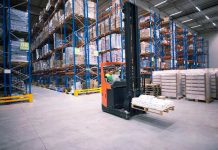More businesses and consumers than ever are committed to reducing their environmental impact. That transformation starts with day-to-day practices, and few areas offer as much potential for meaningful change as packaging. From the materials used to wrap products to the way those products are shipped, each step in the supply chain can leave a substantial ecological footprint. Shifting to eco-friendlier alternatives helps reduce waste, conserve resources, and nurture a healthier planet for future generations.
The Emergence of Eco-Consciousness
In recent years, a growing number of people have recognized that current consumption habits pose serious challenges for ecosystems around the world. Packaging remains one of the most visible aspects of this issue, with single-use plastics and excessive materials cluttering landfills and polluting oceans. According to a source from Allegro Logistics, nearly half of consumers now prefer to buy products that come with minimal or recyclable packaging. This significant shift in consumer attitudes is driving brands to seek out cleaner, more sustainable solutions.
Much of the conversation centers on the broader impact of waste, including plastic’s longevity in the environment. Traditional plastics can take hundreds of years to break down, if they degrade at all. Without changes to packaging norms, oceans and waterways continue to accumulate debris that harms wildlife and threatens human health. Recognizing these hazards, many industries have begun rethinking their approaches, aiming to align product presentation with ecological responsibility.
The Importance of Packaging in an Eco-Friendly Lifestyle
Packaging isn’t just about protecting items during transport or making them look appealing on store shelves. It often acts as a first point of contact between a company and its customers. When people unbox an item and see excessive bubble wrap, layers of plastic, or foam, they may feel guilty disposing of all that waste. Conversely, a minimal, thoughtful approach sends a strong message about a brand’s values. This alignment helps build trust while also doing tangible good for the environment.
Eco-friendly packaging reduces pressure on landfills, curbs pollution, and conserves finite resources. In the long run, businesses can even save money through more efficient designs or by sourcing renewable materials in bulk. For consumers, receiving a product wrapped in compostable or easily recyclable materials adds an extra layer of satisfaction, knowing they can support a cause that transcends the immediate purchase.
The Appeal of Compostable Zipper Bags
While recyclable and reusable packaging solutions have gained attention, certain innovations stand out as game-changers. Compostable zipper bags exemplify this new wave of sustainable materials, offering a functional alternative to traditional plastic pouches. Designed to break down in industrial or home-composting environments, these bags minimize long-term environmental harm. Shoppers who prefer resealable storage find them practical for preserving product freshness.
Because they degrade fully over time, compostable bags address concerns about marine pollution and microplastics. Unlike conventional plastic zip bags that linger for decades, compostable varieties eventually return to organic matter, ensuring a lighter footprint. From a marketing perspective, featuring compostable packaging can give brands a distinctive edge, resonating with a growing audience that wants green solutions without sacrificing convenience.
Overhauling Material Choices
Shifting to eco-friendly packaging involves reexamining each step of the production cycle. Cardboard sourced from sustainably managed forests, water-based inks, and biodegradable fillers can all replace older, resource-intensive materials. For products that do require cushioning, options like molded pulp or starch-based peanuts offer biodegradable ways to safeguard items in transit.
Still, it’s vital to confirm these alternatives meet basic durability standards. Customers expect their purchases to arrive in pristine condition, so packaging must remain sturdy. Fortunately, many newer materials rival conventional plastics in strength or insulation. Piloting small batches or test shipments can help companies verify that replacements withstand typical handling and climatic changes.
Brands must also educate consumers about proper disposal. Even the best compostable zipper bags may end up as litter if people don’t realize they can toss them into a compost bin. Clear labeling and instructions on packaging reinforce correct disposal practices, raising overall effectiveness and satisfaction.
Adopting Refillable and Reusable Systems
Eco-friendly packaging frequently converges with refill or reuse programs. Businesses selling consumables might offer refill stations or discounted replacements when customers bring back containers. Household products in sturdy glass or metal packaging, for instance, can be reused many times before needing to be recycled. By partnering with local retailers or setting up direct return initiatives, companies can seamlessly incorporate these practices.
Some forward-thinking shops present loyalty incentives to encourage repeat reuse. Others set up deposit schemes, where a small additional fee is returned upon container return. Such models show that eco-friendliness doesn’t need to hamper convenience—indeed, it can create closer bonds between brands and loyal customers.
Balancing Cost and Sustainability
While switching to more sustainable packaging can initially appear costlier, over time businesses often recoup these expenses through operational efficiencies and increased customer goodwill. Larger orders of eco-friendly materials may yield bulk discounts. Streamlined designs that use less filler reduce shipping weight, saving money on logistics.
Additionally, brand loyalty sometimes improves when consumers sense genuine environmental stewardship. In a marketplace crowded with options, authenticity can translate into sales. A quote from Allegro Logistics underscores this point: “An honest commitment to greener packaging fosters deeper connections with customers who are eager to support eco-positive brands.” This mutual sense of purpose can be powerful, ultimately strengthening a company’s long-term profitability.
Encouraging Wider Collaboration
Creating a truly green supply chain often requires collaboration between suppliers, manufacturers, and retailers. By working together, businesses can identify cost-sharing strategies for large orders of biodegradable materials, or find new ways to repurpose waste. Similarly, shipping partners can explore alternative fuels or route optimizations that lower emissions.
Government incentives and industry-led initiatives can also boost momentum. Some regions introduce tax credits or grants for companies that prioritize reusable or compostable packaging. By joining relevant associations or networks, businesses stay informed of emerging best practices. In turn, these relationships help them remain competitive while pursuing meaningful environmental gains.
Transitioning to eco-friendly packaging stands at the forefront of a broader move toward sustainable commerce. From adopting compostable zipper bags to revamping entire material supply chains, companies have multiple pathways to reduce their ecological footprint while delivering quality products. Starting small—by replacing a single packaging component—and steadily scaling these changes fosters a smoother process. Ultimately, embracing smarter, greener solutions for packaging not only benefits the planet but also resonates with an ever-growing community of environmentally conscious consumers. By demonstrating authenticity in these efforts, businesses can set themselves apart, proving that success is measured by both profit and the lasting impact they leave behind.










































